A little can be found people who do not know what is wormwood. This fragrant weed can be found almost everywhere - in the meadows, in the courtyard, in the forest, in the park. More recently, the wormwood was considered the usual useless weed that needed mercilessly to destroy. However, today this culture is considered a decorative plant - an important element of natural landscape design.
Wormwood Steller is one of the most popular decorative varieties, which is often used to create rather unusual garden compositions in silver color. Beautiful openwork leaves, an unusual silver shade of stems and foliage make this plant very bright and spectacular decoration of the garden and a homeland. In addition, landing and care for a hint of this species is quite simple and will not require a lot of effort and time from gardeners.
In this article, consider the features and description of the strollery of the steller, as well as we present the characteristics of popular varieties of this culture and use options in the landscape. We note the important points and rules of agrotechnics of growing decorative weed.
Features and Morphological Description Walinkles Steller
Wormwood Steller or Artemisia Stelleriana is one of the most decorative varieties of this culture and is therefore most often used to create garden compositions. This habitual weed belongs to the overall family of wormwood and a large family of comprehensive or astronomes and is a low grassy perennial. To date, the genus is just a huge amount of varieties that are found around the world. In the literature, on average, it is possible to find a description of about 400 species of this plant, among which and the wormwood of the steller. This culture is very unique, as it forms absolutely opposite opinions about himself. On the one hand, this is an annoying weed, which is very difficult to remove from the site without special drugs. And on the other hand, the wormwood of the steller is a very beautiful and decorative soil busty, which will become an excellent garden decoration.
The natural habitat of this variety of wormwood is considered the territory of the Far East, Alaska, Japan, and even North America and Norway. In nature, Wall Steller prefers to grow on coastal slopes, sea coasts, the mouths of rivers and stony rocks. In terms of its characteristics and features, all varieties of wormwood are divided into several large groups and can be decorative, medicinal, feed and so on. Most species and varieties of wormwood, including wormwood steller, are popular medicinal plants whose leaves, seeds and roots are used in the treatment of various diseases. In addition, it is worth noting that the wormwood is used to prepare popular alcoholic beverages, such as vermouth and absinthe.
Wormwood Steller has many popular names that characterize both the appearance of the plant and its quality: the widow of the grass, God's tree, the Chernobor. The scientific name happened from the Latin word Artemisia, which in translation denotes "healthy" - characterizes the therapeutic properties of culture.
Stinking of Steller:
- Wormwood Steller is a decorative-deciduous perennial grassy or shrub plant, which is very popular with landscaped designers and gardeners on Roven with a worm of Louis or Schmidt.
- It is a low-speed soil shrub, which has the ability to apply over the surface of the soil.
- In the height of the hint of this species, the maximum 15-30 cm can be achieved, and during flowering the total height of the plant is approximately 50-60 cm.
- The root strolley system of the steller is represented by creeping rhizome, rather thick and woody, so it can be safely used for subsequent reproduction of culture.
- Bustic is formed by stretching and creeping escapes, rather thick and tough. On one plant can be 1-3 escape.
- Vegetative shoots are densely desirable, stems with inflorescences on the tops. Strengthening and naked, in height is significantly higher than all bustle.
- The main decorative value of the strolley of the steller is the leaves that have a very spectacular and beautiful appearance.
- The leaves begin to appear on the plant early in spring and immediately begin to exhibit a strong fragrance, which is the main feature of all varieties of wormwood.
- This plant has the form of leaves differ depending on their location. The lowest leaves can reach approximately 7 cm, in the outline they are oval or wedge-shaped, unpaired-blade or deep-shaped-gear. The middle leaves are peristo-separated or separate, the stems are attached with short roots. The most upper leaves can be tremendous or solid, peristo-closed or lanceolate linear.
- Special decorative leaves are given separated blades, which can be rounded and oblong, slightly pointed and all-wide.
- All leaves have a silver-white color, which makes all the plant decorative throughout the season. To the touch leaf plate soft and silky.
- In its appearance, the leaves resemble the beautiful carved horns of the deer.
- The thick felt feed is present not only on the leaves, but also on the stems of the wormwood of the steller.
- Flowering wormwood begins approximately in July or in August, however, the flowers of this plant are difficult to call decorative. That is why many gardeners in the cultivation of wormwood of a steller flowercas are cut off so that they do not spoil the appearance of the bustle.
- On the tops of the flowers are blooming baskets collected in loose inflorescences. Extreme flowers bloom in the amount of 16 pieces, and disk - 30 pieces.
- Flowers in a plant of a yellow shade.
- Wormwood Steller has a high frost resistance, this plant can withstand frosts up to minus 40 degrees.
- It is also worth noting that this decorative culture is well tolerating drought. However, it is important to regularly rejuvenate bushes so that they do not lose their decorativeness.
Using a strolley of a steller in landscape design
Wormwood Steller is a decorative plant, which is actively used by gardeners to decorate the household plot. With this plant, you can create the brightest and unusual compositions and landscapes. Consider the main options for using this variety of wormwood.
- Since the strolley of the steller is a low shrub, then this kind can be planted as a curb plant or for the framing of garden tracks.
- You can use a plant for decorating rocaries and alpine slides in combination with other cultures.
- Wormwood Steller will perfectly look in stone gardens.
- Due to the permanent decorativeness of the foliage of the wormwood, this plant can be planted in the neighborhood with different colors, thereby creating harmonious and beautiful flower beds and compositions.
- Alternatively, the seedlings of the wormwood of this species can be attached with other decorative shrubs, for example, near Barbaris.
Popular Walnings Steller
Wormwood Steller has several varieties that are distinguished by the peculiarities of the appearance and structure of foliage. Consider the characteristics of the most popular varieties of this plant among gardeners and landscape designers.
- Moris Form Strawl Sort. This kind of decorative weed is perhaps the most common. It is a perennial plant in the form of a small bustle of 15 cm in height and up to 50 cm in diameter. A bush is formed by fruitless shoots that are thickly covered with oval or spade-hearted leaves. Leaves have a whitish omission. In July, few ripening patterns with dense inflorescences of a yellow shade grows. The variety of wormwood Steller Maurice Forms grows perfectly in the sun and on poor soils. Used to decorate borders and stone gardens.
- Sort Wall of Steller "Silver Brocade". Also a beautiful variety of decorative wormwood, which is used in landscape design. Thin shoots are thickly covered with silver grain-cut, openwork leaves, which are very similar to the deer horns. This grade has a specific bitter taste and the insertion of the sheet plate and stems. In the height, the bush can reach about 25-30 cm, while it is very quickly growing. The leaves on the plant begin to appear immediately after the snow. In approximately June-July, the bush launches flowers with unbelled yellowish flowers. The variety is absolutely not demanding in care.
- Grade "Boughton Silver". This variety of wormwood has another name - silver brocade. It is a beautiful soil perennial plant that is perfect for landing along the borders and containers. Bustic height can reach about 20 cm, while in diameter can grow to 50 cm. The plant has openwork decorative leaves, located quite low.
Steller's reproduction: the most common ways
It is quite simple to grow in its portion of the stalls of the steller, because this plant has a huge amount of advantages and merits, among whom unpretentious care. It is enough to know the features of the most suitable ways to reproduce this culture and you can get beautiful plants in your garden. The wormwood of this species can be multiplied by several ways: cuttings, the division of the bush and the cuts of the root. Consider the characteristics of these plant breeding methods.
Reproduction of strollery steel
- Due to this method of reproduction, you can immediately get a large amount of planting material.
- It is recommended to carry out the reproduction of cuttings at the time of active growth of Kusta, it is about May-June.
- First of all, it is necessary to cut the cuttings, for which any parts of the steller wormwood shoots are suitable: young and last year, the tops, or the central part of the stem.
- With the help of a sharp secator or knife, cut the cuttings with a length of 8-10 cm, while cutting it is necessary under the node. So that in the future when landing do not confuse the top and bottom of the planting material, the lower cut is recommended to do at a small angle.
- Next, it is necessary to prepare a small greenhouse or a closed area in the garden for rooting cuttings. To do this, a mixture of moisturized sand and humus is perfect.
- After that, you can proceed to rooting the cuttings of the strolley of the steller. It is important to adhere to certain rules: to root the depth of no more than 3-4 cm, the distance between the individual cuttings should be 5-8 cm.
- The cuttings after landing must be closed with glass or film for faster formation of roots.
- After about 15 days, roots will appear and the shelter can be removed.
- Further care for young plants is moderate watering.
- On a permanent place, the seedlings obtained by shifting are transplanted only for the next year.
Stinking Stinking Steller Bust Bust
- This method is used much more often, since in any case, once every 2-3 years, the storms of the steller need rejuvenation. And for this, an adult plant needs to be divided into several young and planted at a permanent place.
- It is recommended that the bush is reproduced in the spring of approximately at the end of April or in early May, as well as in the fall from August to September.
- With the help of a shovel, it is necessary to neatly dig up a hormone bushing and gently put it on the grass. You can slightly smooth the soil from the root system.
- Next, you need to take a secateur and carefully divide the bush into several parts in such a way that each decene has a segment of rhizomes and 2-3 strong and not damaged escape.
- Sections of sections can be treated with charcoal, after which the decens are planted at a permanent place and are abundant.
Reproduction of strollery steller segments of rhizome
- Wormwood varieties The steller can be multiplied with the help of root segments.
- In this case, it is not necessary to dig an adult plant at all. This can be done if it has not yet passed 3 years from the moment of planting the cooks, and you want to get some more seedlings.
- The timing of such reproduction is similar to the division of the bush: in the middle of spring or at the end of summer.
- With the help of a shovel, it is necessary to carefully dig up a hormone bushing on one side, freeing part of the roots.
- Next, carefully cut off the shovel part of the root, which in the future you need to divide into several deteen in such a way that each has 1-2 healthy kidney.
- The resulting segments of the root land at a permanent place in advance prepared soil.
Reproduction of strolley steller seeds
- This method of reproduction is used much less frequently in relation to wormwood of the steller, since this is a perennial plant and preferably breeding vegetatively. In the case of seed reproduction, you can get a young plant without preserving maternal signs.
- It is best of the seeds to grow seedlings, which is then planted in an open ground.
- In approximately in April, the seeds of the strolley of the steller are sown in a greenhouse in dry ground. For the successful germination of seedlings, it is necessary to maintain moderate temperature and lighting.
- After about 15-19 days, shoots achieved that size when they can be divened.
- Peer seedlings are recommended for 1-3 pieces in separate pots with a diameter of at least 10 cm.
- At the end of May or in early June, the grown seedlings can be resettled at a permanent place in the open soil. However, some gardeners recommend landing young plants to a permanent place only for the next year.
Staffing Steller - Phased Instructions
Landing the wormwood of this variety is quite simple and not tedious, but as a result, the decorative plant will delight you with a beautiful and spectacular appearance and will become an excellent addition to the garden composition. Consider a description of the main landing stages.
Stage 1. Selection and purchase of sealer wrappers
- First of all, if you wish to grow in your site, the Wall of Steller each gardener needs to think about the purchase of landing material.
- You can buy a wormwood of a steller in any specialized garden center or a nursery that is engaged in breeding various plants.
- You can buy seeds of culture, as well as grown seedlings and full-fledged seedlings in pots with a closed root system.
- If you have the opportunity to grow by growing plants from seeds, you can purchase this seating material. If you wish to get an adult plant by a faster way, it is recommended to buy ready-made seedlings that go on sale in about aprint or May.
- Before buying, be sure to carefully check the planting material. Seedlings and seedlings should be without damage, without signs of drying and rotting. When buying seedlings in pots, make sure in excellent condition of the soil - there must be signs of mold on it.
Stage 2. Selecting a landing site of a steller
- At the next stage, it is important to choose a suitable place on the site for planting this culture.
- Wormwood Steller has beautiful silver foliage, so open solar places are suitable for it, although seedlings can feel great in mild half.
- This plant will grow perfectly on a bit of elevated places, where there is no water stagnation, which can adversely affect the root system of culture.
- You can choose a stony or sandy area, which is also ideal for the wormwood of this species.
- When choosing a seat under the landing, be sure to consider that this is a low-speed plant and it is most suitable for disembarking along borders and garden tracks.
Stage 3. SELECT AND PREPARATION OF THE SUCH FOR PLANING WALKS STELLER
- Light and loose soils are suitable for growing this culture, preferably depleted and without a large content of humus and nutrients.
- It is also important to pick up areas with a soil of a neutral reaction. When this indicator changes towards acidity, it is necessary to add some lime to the ground.
- It is not worth landing the strolley of the steller on clay and highly moistened soils, which can lead to reinforcement of the roots.
- Before boarding, it is necessary to carefully switch the plot and add some sand for looseness to it. The organic and other fertilizers are not needed to be added, with the exception of a small amount of humus.
Stage 4. Plainty Steller
- In the open soil, the seedlings of wormies are planted at around the end of April or in early May, when the threat of return freezers.
- Before boarding, prepare landing holes, the size of which should be a little more root seedlings with an earthen room. It is important to leave the distance between the individual plants at 25-30 cm. If you plan the seedlings into several rows, it is also necessary to leave a place between them.
- At the bottom of the landing pits, you can put a layer of mulch in the form of fine stones or gravel to prevent stagnation of water in the roots, which is detrimental for this culture.
- If the seedlings are purchased in the pots, then before planting, be sure to span with water for easier plant extraction.
- If you do not want plants to grow quickly in all directions, it is recommended to limit their root system. To do this, in the preparation of landing holes, you can wear around the perimeter of slate slices or other limiters. There is one more option, put the wormwood into the container, and already insert it into the ground.
- After landing, be sure to span the plants.
Agrotechnology of growing wormwood steller: secrets and nuances of care
The wormwood of this species is considered unpretentious and simple in the care of the plant, which even the novice gardener is growing.
- Watering. The first two weeks after the landing of young plants of the strolley of the steller need regular watering. This is necessary for rooting and suiting. However, in the future, watering is almost completely abolished. It is enough to water with a small amount in the most arid periods of summer. Spray bushes are not recommended at all. Wormwood from a large amount of moisture will lose their decorativeness.
- Loosening and mulching. Periodically, each bustice of the wormwood must be loosened and removed around the weed, which will allow to saturate the soil with oxygen.
- Falker of plants. Wormwood Steller prefers to grow on poor soils, so it doesn't need it in the feeding. Putting fertilizers in a sense is even contraindicated with wormwood, since its leaves and the form of cooks lose decorativeness.
- Trimming. The wormwood of the steller will very quickly grow up shoots, the bush is constantly growing, so it is important to regularly trim in order to maintain a compact form. Also, gardeners are recommended to trim at the beginning of blooming flowers so that they do not worsened the decorativeness of bushes.
- Fighting diseases and pests. The wormwood is characterized by good resistance to pests and diseases, so it is important to regularly monitor the rules of care so as not to harm.
Wormwood Steller - Photo
Wormwood Steller is a decorative weed that will become an excellent decoration of any subsidence. In addition, landing and care for this culture is quite simple, you just need to plant a plant for a bed and admire it with a spectacular appearance.

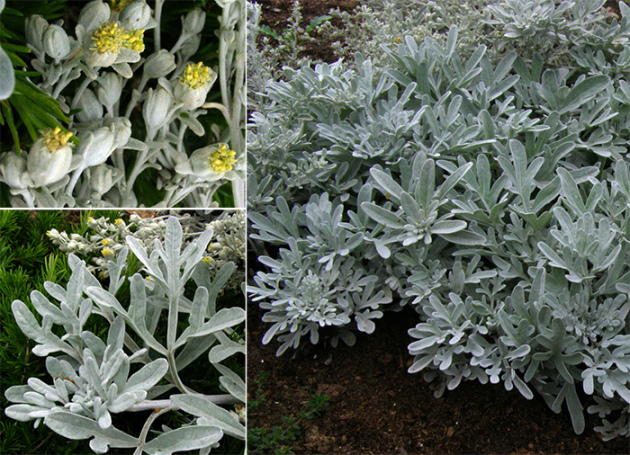
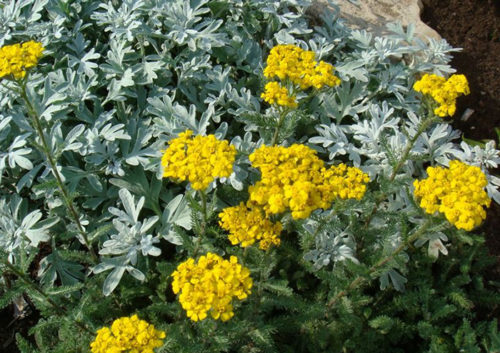
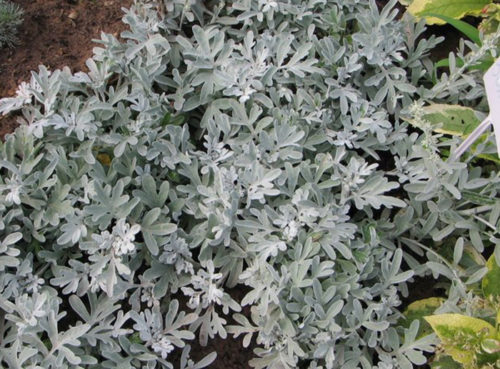

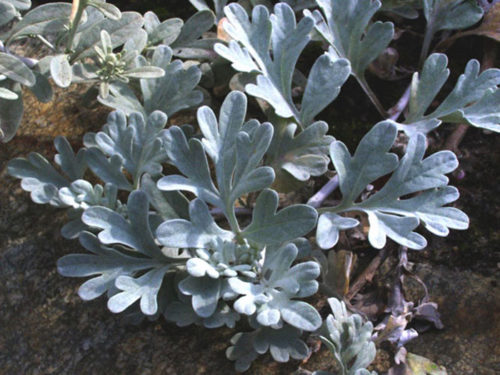
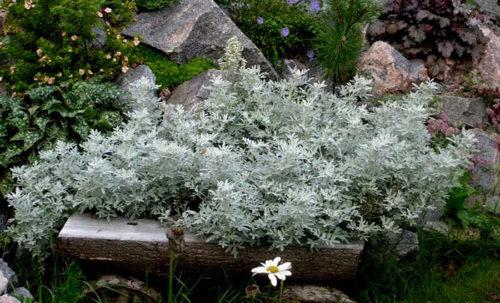
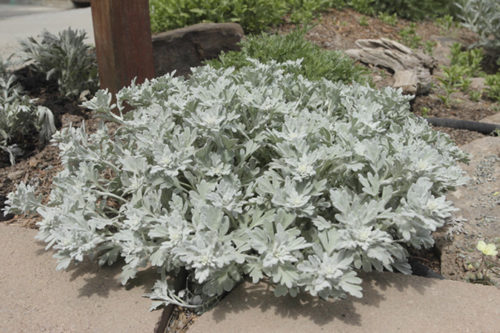
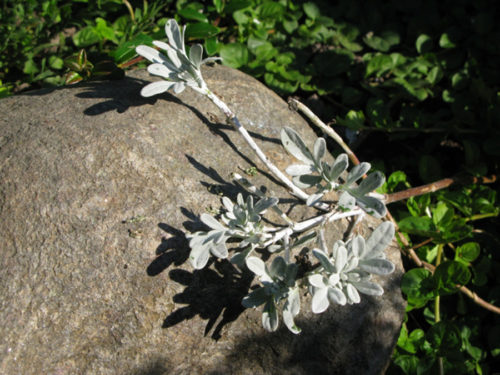
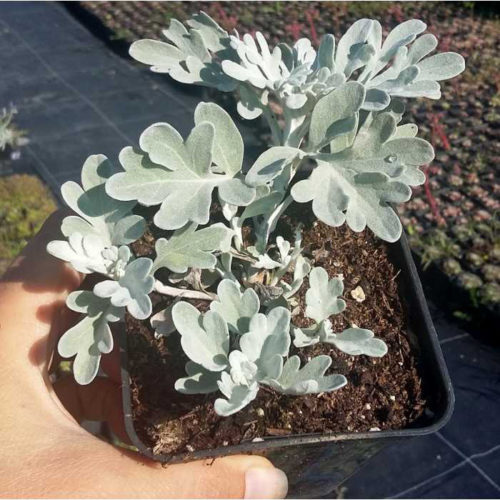
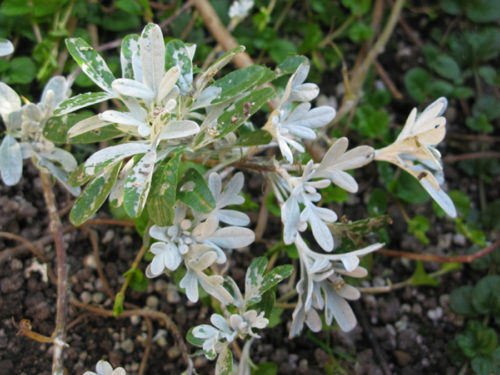
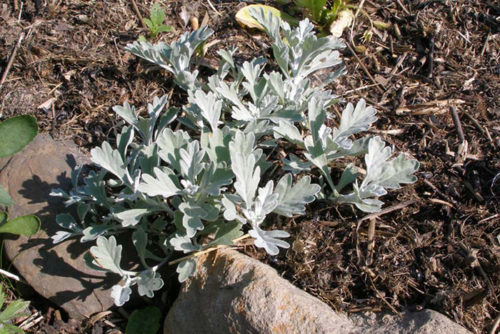
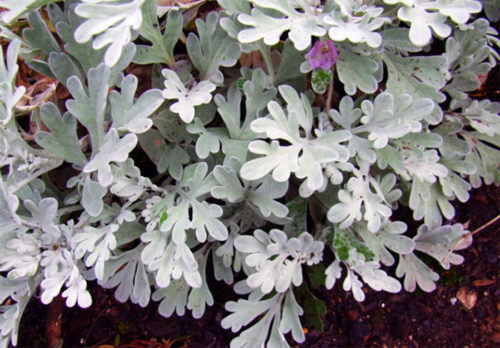
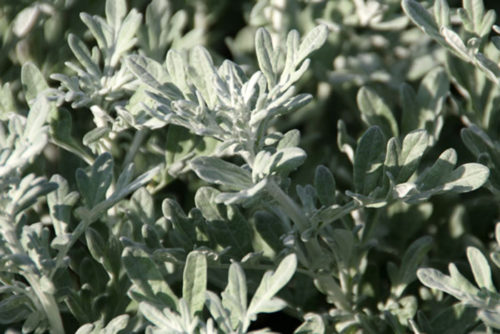
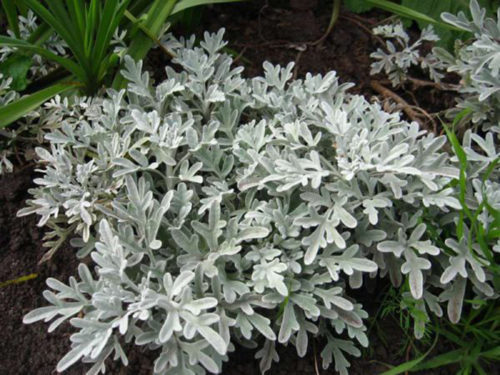
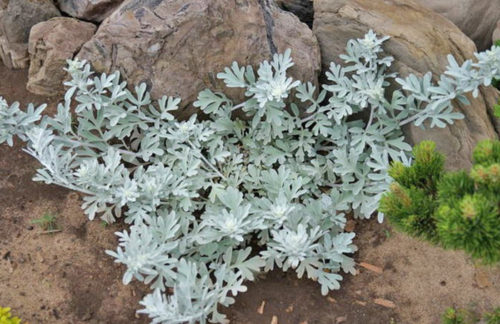
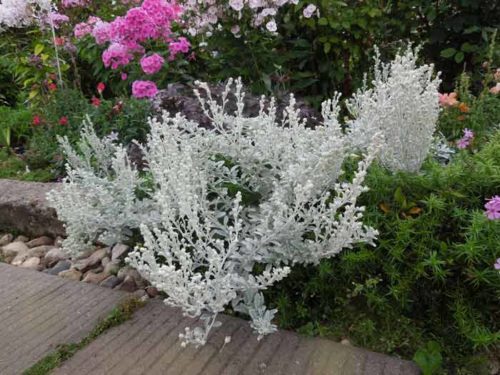
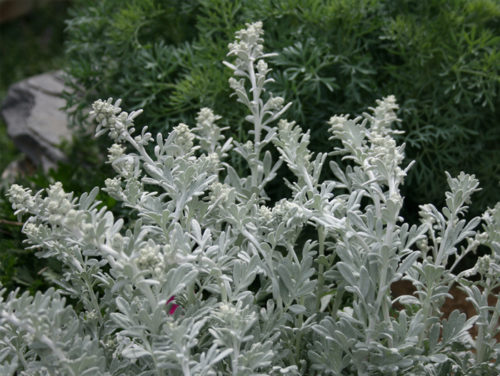












 Start a discussion ...
Start a discussion ...